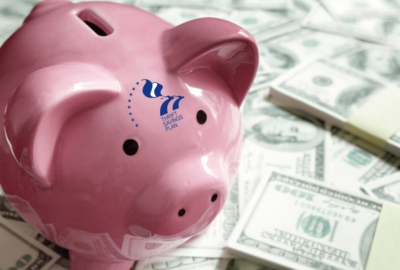For TSP participants, more changes from SECURE 2.0 are coming soon
A few things Thrift Savings Plan participants should know about upcoming changes from the SECURE 2.0 Act, aiming to make it easier to save for retirement.
Participants in the Thrift Savings Plan should be on the lookout for several upcoming changes that will affect their retirement savings accounts.
Those changes come from the SECURE 2.0 Act, which President Joe Biden signed into law in December 2022. The legislation aims to make it easier for TSP participants — and others enrolled in employer-sponsored 401(k) plans — to save for retirement.
“Several provisions in the new law affect the TSP and how TSP participants contribute to and use their TSP savings,” the Federal Retirement Thrift Investment Board (FRTIB) said in SECURE 2.0 guidance on its website.
Notably, SECURE 2.0 pushes back the age for required minimum distributions (RMDs) and in some cases increases the limit for catch-up contributions.
But many provisions of the new law have different start dates.
The most immediate upcoming change from SECURE 2.0, beginning in 2024, is that Roth balances in the TSP will no longer be subject to RMDs prior to a TSP participant’s death, according to FRTIB.
“Your RMD calculation will include only your traditional TSP balance, and only distributions from your traditional TSP balance will count toward satisfying the RMD amount,” FRTIB said.
Other provisions of SECURE 2.0 have already taken effect. At the beginning of 2023, the starting age for RMDs increased from 72 to 73. Beginning in 2033, the starting age will increase even further — to 75.
By bumping up the minimum age requirement, SECURE 2.0 aims to let TSP participants, and others in employer-sponsored retirement plans, spend a longer time saving up in their accounts before having to start distributions.
The provision increasing the RMD age affects anyone born on or after Jan. 1, 1951. It doesn’t impact anyone born before 1951 — that group had to start taking distributions in April 2023. And the penalty for not taking the RMD on time also decreased this year — from 50% to 25%.
Additionally, all TSP participants ages 50 and older can make catch-up contributions, but starting in January 2025, the contribution limit will increase to $10,000, as a result of SECURE 2.0. The increased catch-up limit applies only to TSP participants ages 60 to 63. By comparison, the current catch-up contribution limit for anyone 50 and older is $7,500.
Another provision of SECURE 2.0 that affects higher earners in the TSP, however, has been punted down the road for a couple more years.
Once in effect, this provision will require that any catch-up contributions that higher‑income TSP participants make be designated as after-tax Roth contributions, according to the IRS.
The change from SECURE 2.0, originally set to take effect next month, now won’t happen until 2026. FRTIB and other employers have said they plan to use the next two years as a “transition period” to prepare for the change.
“This means, if your wages for 2025 are greater than the wage threshold and you’re eligible to make catch-up contributions, any catch-up contributions you make for 2026 will go to your Roth balance,” FRTIB said.
The initial language of SECURE 2.0 set the provision to affect anyone who earned $145,000 or more in salary in the prior calendar year. Once implemented, the IRS will adjust the wage threshold for inflation each year.
For the time being, higher-earning TSP participants can still make catch-up contributions as either Roth or traditional contributions.
Participants can find more information and details about the SECURE 2.0 changes on TSP’s website.
Copyright © 2025 Federal News Network. All rights reserved. This website is not intended for users located within the European Economic Area.
Drew Friedman is a workforce, pay and benefits reporter for Federal News Network.
Follow @dfriedmanWFED






